1,000 Y EARS OF
D IABETES W ISDOM

Inspiration and insight the worlds leading
diabetes professional gained from their patients
David G. Marrero, PhD
Robert Anderson, EdD
Martha M. Funnell, MS, RN, CDE
Melinda D. Maryniuk, MEd, RD, CDE

Director, Book Publishing, Robert Anthony; Managing Editor, Book Publishing, Abe Ogden; Editor, Rebekah Renshaw; Production Manager, Melissa Sprott; Composition, ADA; Cover Design, pixiedesign, llc; Printer, Thomson-Shore, Inc.
2008 by the American Diabetes Association, Inc. All Rights Reserved. No part of this publication may be reproduced or transmitted in any form or by any means, electronic or mechanical, including duplication, recording, or any information storage and retrieval system, without the prior written permission of the American Diabetes Association.
Printed in the United States of America
1 3 5 7 9 10 8 6 4 2
The suggestions and information contained in this publication are generally consistent with the Clinical Practice Recommendations and other policies of the American Diabetes Association, but they do not represent the policy or position of the Association or any of its boards or committees. Reasonable steps have been taken to ensure the accuracy of the information presented. However, the American Diabetes Association cannot ensure the safety or efficacy of any product or service described in this publication. Individuals are advised to consult a physician or other appropriate health care professional before undertaking any diet or exercise program or taking any medication referred to in this publication. Professionals must use and apply their own professional judgment, experience, and training and should not rely solely on the information contained in this publication before prescribing any diet, exercise, or medication. The American Diabetes Associationits officers, directors, employees, volunteers, and membersassumes no responsibility or liability for personal or other injury, loss, or damage that may result from the suggestions or information in this publication.
 The paper in this publication meets the requirements of the ANSI Standard Z39.48-1992 (permanence of paper).
The paper in this publication meets the requirements of the ANSI Standard Z39.48-1992 (permanence of paper).
ADA titles may be purchased for business or promotional use or for special sales. To purchase this book in large quantities, or for custom editions of this book with your logo, contact Special Sales & Promotions, at the address below, or at or 703-299-2046.
American Diabetes Association
1701 North Beauregard Street
Alexandria, Virginia 22311
Library of Congress Cataloging-in-Publication Data
1000 years of diabetes wisdom / David G. Marrero [et al.], editors.
p. ; cm.
Includes bibliographical references and index.
ISBN 978-1-58040-297-2 (alk. paper)
1. Diabetes--Case studies. 2. DiabeticsCareCase studies. I. Marrero, David G. II. American Diabetes Association. III. Title: One thousand years of diabetes wisdom. [DNLM: 1. Diabetes MellitusPersonal Narratives. 2. Health PersonnelPersonal Narratives. WK 810 Z999 2007]
RC660.A24 2007
616.462dc22
2007042399
eISBN: 978-1-58040-342-9
C ONTENTS
I NTRODUCTION

T his book is a collection of stories told by health care professionals about special experiences that transformed how they regard their work in diabetes. Why stories? Stories are a powerful way to teach and to learn. In fact, storytelling is one of the oldest forms of education. Throughout history, listening to stories has provided us with a way to connect the actions and experiences of others to use in our own lives.
Through stories that we share, we make our own memories and experiences available to others. Stories can make empathetic connections, helping us to more closely identify with others who share our world, yet are exposed to different forces that influence how they move through it. This is an essential ingredient for helping others to develop strategies to transform their lives so they can effectively adapt to a chronic illness. Stories can also help us clarify and examine our value system. Storytelling is central to the expression of the human condition. Without stories to give us a sense of connectedness to the earth and its inhabitants, we would be stripped of the awareness of who and what we are.
The stories told here were collected from a wide range of health care professionals who work in diabetes. Many of them are well known, and others less so, but they all share with us stories of memorable experiences that helped to shape how they viewed themselves, diabetes care, and their patients.
We invite you to share in their stories and in doing so we hope that you will reflect upon the relationships you have with your patients and the ways in which you relate to them. We hope that you too can relate their experiences to your own practice and hopefully gain a better understanding of the way in which our patients shape and enrich our lives.
We spend years acquiring the knowledge to be experts, problem solvers, and teachers so that we can help our patients. We are committed to helping the patients who come to us with problems they cannot solve on their own. Our ability to help others is a source of pride and satisfaction, however, if we listen, really listen, to our patients, we may discover that they are also experts, problem solvers, and teachers. If we allow our patients to also be our teachers, we may someday realize that although we began with knowledge, we ended up with wisdom.
David G. Marrero, PhD
Robert Anderson, EdD
Martha M. Funnell, MS, RN, CDE
Melinda D. Maryniuk, MEd, RD, CDE
C HAPTER 1

Underestimating Patients

Determination Is the Key

by Joyce Green Pastors, dietitian,
and Terry Saunders, psychologist, Charlottsville, VA
O ver the past few years, we have been providing lifestyle change counseling to selective patients with diabetes. These patients have agreed to be videotaped with the purpose of using segments of the videos for a professional education workshop.
Our first videotaped patient was a complex casea 48-year-old female, severely obese, with a history of yo-yo dieting, an eight-year history of type 2 diabetes, and very insulin resistant. The patient had a history of hypertension, heart disease, and depression and had been a smoker since age 16. Along with these factors, she had a complicated challenging social and financial situation, with three children ranging in age from 12 to 28, all living in the same home, and a husband who had died of cancer six years previously.


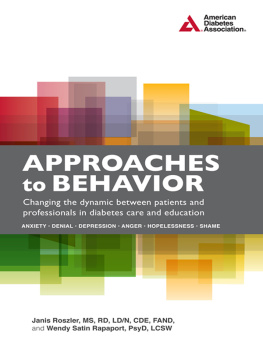


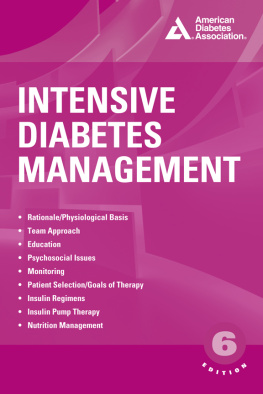
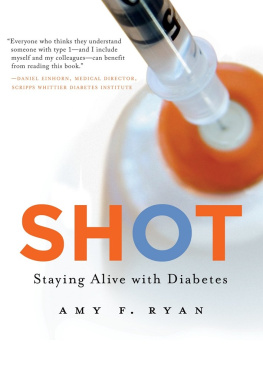

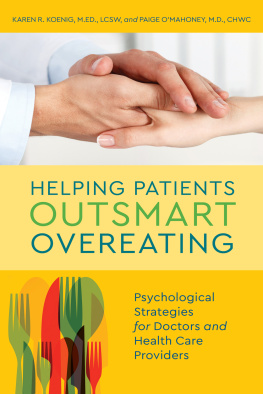
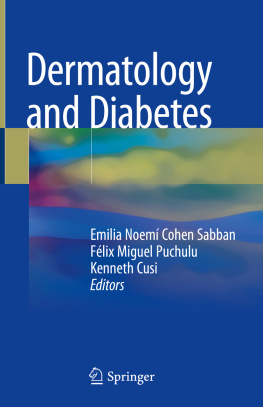


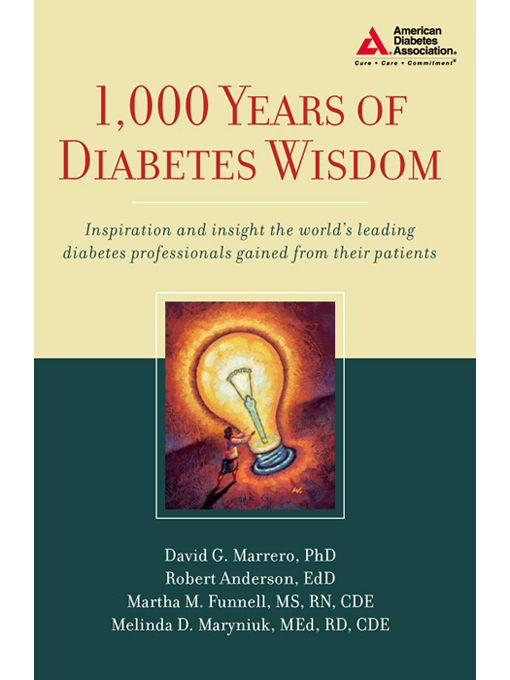


 The paper in this publication meets the requirements of the ANSI Standard Z39.48-1992 (permanence of paper).
The paper in this publication meets the requirements of the ANSI Standard Z39.48-1992 (permanence of paper).

